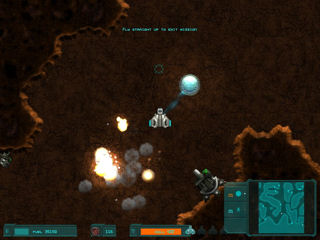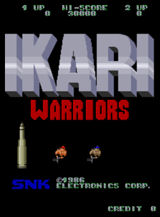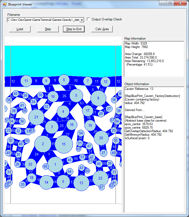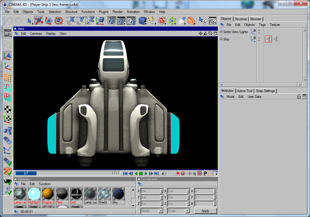Independent Software
Development
Suisoft Limited
|
Suisoft's Gravity CoreGame Project Postmortem by Gary Marples
* Realistically if assuming a small salary and business setup costs, around
20,000 dollars (10,000 pounds). In reality, I didn't pay myself anything during
development.
Background
Many years later, following an IT Qualification and 15+ years in the Information Technology trenches, a corporate takeover (with associated disgruntlement and voluntary redundancy) provided a time to reassess direction and ultimately choose a new path. Gravity Core already existed as a multiplayer gameplay prototype. Playing the game was a regular lunchtime pursuit in which normally peaceable colleagues brutally gunned each other down and rammed each other into walls. The gameplay was inertia based, in the spirit of home computer favorites such as Thrust and Oids, albeit with a more combatative, violent nature. After much soul searching and weighing of Pros and Cons, I decided to form a company and develop my prototype game into something to sell. My very supportive wife agreed (and indeed encouraged - more on this later) my lunatic plan to take out the best part of a year and try to launch my company and first game.
What Went RightIterative Development ProcessA core principle I stuck with throughout the entire project was to maintain a working, playable game all of the time and add one feature at a time. This really paid off because code quality problems were kept to an absolute minimum and playing a working game is fun. I would have lost heart with the project very quickly if the game had been in a broken state for most of the time. Procedural Level Generation and Artificial Intelligence
With Gravity Core, I started out with a blue print generated from caverns (circles) with adjoining corridors and a mechanism to prevent overlaps. The map structure is then converted into a tilemap with contour tiles applied. Enemies can then be spawned into the rooms (caverns/tunnels). Some caverns are marked as special (for example Factories, Sphere etc) and are populated with more enemies. The number of enemies in a 'room' can be tracked to prevent them from clustering too much. The blueprint is retained for enemy navigation. This allows the enemies to roam freely around the environment, rather than sitting and waiting for the player to turn up. The enemies randomly patrol around when they aren't chasing the scent of the player. Overall, I've been really pleased with the way the level generation turned out. I'm sure I will be able to take the concept much further in a future game. Rendered Sprites
Creating the sprites using the 3D package, led to nicely shaded ships and spectacular explosions and particles that were complimented in some reviews. A fringe benefit, is the ability to resize the graphics very easily by adjusting the outputs and also render some of the graphics for use on the title screen. Sound EffectsAlthough some reviewers criticised the lack of in-game music in Gravity Core, the reception to the sound effects was good. This is amazing really, considering I created all of the sound effects from samples of sounds in my home environment. Cap guns, fireworks, thunder, electrical motors from vacuum cleaners, gas rings, blowing into the mic, you name it. Looking back, this was pretty bloody-minded. My mindset with Gravity Core was to keep expense to an absolute minimum, to the point of avoiding spending a few hundred dollars on some sound effect libraries. I've enjoyed messing with tape recorders and sampler software since I was a kid. I think I enjoyed it a bit too much... I recall getting up in the middle of the night and recording rain and thunder. This came in very handy when adding depth to explosions and gunfire but didn't greatly amuse my wife at the time. (By at the time, I mean at the time of recording, rather than 'wife at the time' - she hasn't left me... yet). Support and New ContactsI had a huge amount of support from my wife, Rebbekah. She had a lot to put up with, as I endlessly rambled on about the game and later stressed out during business setup and first release, not to mention financially supporting me. Friends and family were also extremely supportive. My Mum and Dad had fuelled my computer obsession since I was seven years old and continued to support my crazy endeavour. Paul "Guffaw" Turner played Gravity Core until his eyes melted and his fingers curled into crippled claws. My inlaws in particular never lost faith in their wayward son-in-law. I received plenty of support from online gaming review sites, download sites and blogs. Support also came from unexpected quarters, such as other Indie's giving me suggestions and feedback and Micro Mart printing several snippets of news and ultimately a review - my only review in print, I believe. Hopefully I will be able to build on this support with my future games. What Went WrongMarket Misjudgement
My next game will be much more immediately gratifying. I intend to start with simple, easy gameplay and pile on the toughness further into the game and on higher difficulty levels. Mainstream CoverageWith Gravity Core, I have really struggled to get any mainstream coverage (i.e. printed gaming press). I think this is due to the traditional retro style of the game (i.e. it is not a quirky or original game that stands out) and distinctly average production values. These elements coupled with the lack of immediacy has made for a very pale blip way under the radar. I've had far more success with niche Indie review sites and somewhat bizarrely (but much appreciated) in the gaming section of Micro Mart. I think even if Gravity Core had received a four page spread in PC Gamer, an interview and a run of full page ads, the game would still have been a slow seller. Inability to Give UpOnce I had released Gravity Core and a couple of online reviews had been published, I acted on the feedback received and began a series of releases with selectable difficulty levels, alternative control schemes and significant work on balancing the difficulty. I spent months improving the game but without making fundamental changes to the style of play I never managed to make it accessible. I had gone way beyond tenacity and drifted into obsessive (something of an OCD computer programmer stereotype). In retrospect I should have written off Gravity Core and started another game. Even now, more than two years after the first release, I am still tempted to create a sequel and tackle the shortcomings. That way lies madness... Multiplayer ComplexitiesBecause Gravity Core grew from a multiplayer game / engine experiment into a full game, I put an enormous amount of effort into coding and testing the multiplayer aspects of the game. Testing a multiplayer game is much more labour intensive, as the number of situations and glitches are much increased. Additionally, in order to carry out proper testing, you need to pull together a group of players. Throwing this into a test/fix cycle really drags out a release. Unfortunately, the majority of players never tried player versus player or co-op and the game received much criticism in reviews over the lack of matchmaking, internet and wireless performance. My efforts would have been much better redirected to content and variety. Too Many Hats
Having battled through to the bitter end, I feel a sense of achievement having finished Gravity Core and booting it out of the door. The weakest area (aside from immediacy) is probably the art direction, both music and visuals. The ships and explosions look nice enough but the title graphics and backgrounds and pretty plain and underdeveloped. The maps were described as 'lacking a sense of use' in one review, which is pretty apt. I had piles of sketches and ideas for mining equipment, buildings, crystals and wall decorations that never made it into the 3D package or paintshop. The Future...In terms of commercial success, Gravity Core has been a misfire. On the plus side, there are a number of fans out there enjoying whizzing around the caverns and revelling in their skills and that's something I really get a kick out of. The end result has been a huge (often brutal) learning experience for me, proof to myself and others that I can get a game out there and a stack of re-usable code and business bits. I have lots of ideas (more ideas than time, like most game developers) and have a hybrid retro game coalescing in my brain. Something may well emerge next year.
|
|||||||||
© Suisoft Ltd 2007-2012. All rights reserved.
Privacy Policy


 The initial spark of Suisoft (and Gravity Core) stems back many years to an
eight year old obsessed with computers and arcade games. The concept of being
able to write code into a machine and make it do 'stuff' by itself was a concept
much too intriguing to ignore. The typical modus operandi for family holidays
would be to spend too long in darkened arcades playing the latest games (Ikari
Warriors and Tiger Heli spring to mind) then arriving home clutching scribbled
game designs and constructing imitations of the games.
The initial spark of Suisoft (and Gravity Core) stems back many years to an
eight year old obsessed with computers and arcade games. The concept of being
able to write code into a machine and make it do 'stuff' by itself was a concept
much too intriguing to ignore. The typical modus operandi for family holidays
would be to spend too long in darkened arcades playing the latest games (Ikari
Warriors and Tiger Heli spring to mind) then arriving home clutching scribbled
game designs and constructing imitations of the games.


